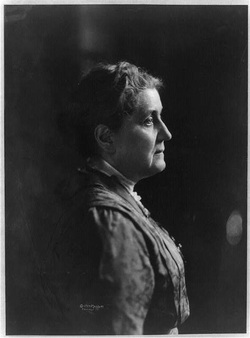Social Reforms of America: Early to Mid 19th Century
Dorothea Dix's Main Contribution to Prison Reform
In 1841, Dorothea Dix visited a jail in Massachusettes, finding out that the conditions was horribly bad: disregard of sex, age, psychological state, or accusation, the criminals in ragged cloth were crowded together in unheated cells. She spent next two years visiting every prison in Massachusetts to gathered evidence of abuses and reported to the Massachusetts legislature.
Realizing that sane and insane were all chained together in the small cells, she called for seperated asylums, state-supported care, and humane hospitals for the mentally ill.She created the first generation of American mental asylums. She also helped establish more thirty hospitals, including five hospitals in Massachusetts, and led fifteen other states to build asylums. Besides, she pleaded for human rights to Queen Victoria and the Pope.
Being the leader of the Prison Reform Movements during the mid 1800s, as well as that for providing mental-hospital care. The settlement-house movement was inspired by the two women helped immigrants adjust to city life: Jane Addams, who founded Hull House in Chicago in 1889, and Lillian Wald, who founded the Henry Street Settlement House in New York City in 1895.
Realizing that sane and insane were all chained together in the small cells, she called for seperated asylums, state-supported care, and humane hospitals for the mentally ill.She created the first generation of American mental asylums. She also helped establish more thirty hospitals, including five hospitals in Massachusetts, and led fifteen other states to build asylums. Besides, she pleaded for human rights to Queen Victoria and the Pope.
Being the leader of the Prison Reform Movements during the mid 1800s, as well as that for providing mental-hospital care. The settlement-house movement was inspired by the two women helped immigrants adjust to city life: Jane Addams, who founded Hull House in Chicago in 1889, and Lillian Wald, who founded the Henry Street Settlement House in New York City in 1895.




